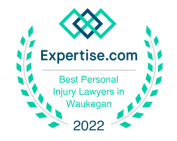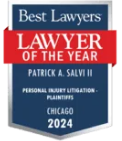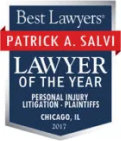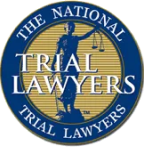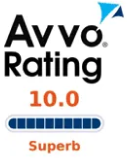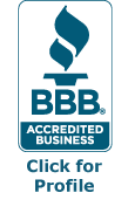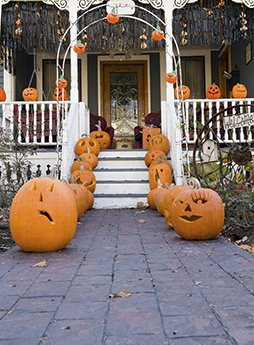
So, you are a private homeowner or organization that has decided to operate a haunted house, pumpkin patch, corn maze or zombie run this Halloween season.
So, you are a private homeowner or organization that has decided to operate a haunted house, pumpkin patch, corn maze or zombie run this Halloween season.
You are probably thinking about all of the tricks and treats you can use to entertain your guests – or customers – and not about the all-too-frightening consequences you could face if someone gets injured while on your property and seeks compensation through a premises liability claim.
To help you identify potential liability risks and discuss how to prevent and insure yourself against them, we present the following guide.
Haunted House Injury Risks & How to Prevent Them
Salvi, Schostok & Pritchard P.C. wrote a blog article about keeping one’s property safe from a liability claim “before zombies and witches knock on the door.” The firm also discussed this topic on Fox Chicago.
Even though the firm addressed the situations that can arise when you are simply inviting neighbor children and parents onto your property to give out candy, much of what they discussed can be applied to haunted houses as well – especially if you are operating it from your home.
The basic risks – and how to avoid them – include:
Slips and Falls
Make sure there is a clear, well-lit path to the door (or entrance to your haunted house). Clear away leaves and clean up all tripping hazards, including shovels, rakes, electrical cords and other debris. Even though you may have a roped off walkway or path through the house, make sure other areas are free of hazards as well. You have to be prepared for those (especially young children) who won’t stay within the lines. If you plan to scare guests with actors who jump out or objects that pop out, don’t do it near stairs. A visitor could fall down while jumping back.– Make sure there is a clear, well-lit path to the door (or entrance to your haunted house). Clear away leaves and clean up all tripping hazards, including shovels, rakes, electrical cords and other debris. Even though you may have a roped off walkway or path through the house, make sure other areas are free of hazards as well. You have to be prepared for those (especially young children) who won’t stay within the lines. If you plan to scare guests with actors who jump out or objects that pop out, don’t do it near stairs. A visitor could fall down while jumping back.Slip and falls
Dog bites
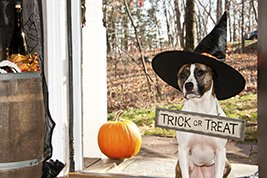 A few years ago, Patrick A. Salvi obtained a $1.15 million settlement of a dog bite claim – the largest of its kind in Illinois history. So, we understand the liability risks involved with pets. If you are planning to have lots of people in strange-looking costumes coming onto your property or spooky props for your haunted house, keep your dog away. Even though you could keep the pet inside in a room, we suggest actually leaving the pet at another house with a trusted friend or relative.
A few years ago, Patrick A. Salvi obtained a $1.15 million settlement of a dog bite claim – the largest of its kind in Illinois history. So, we understand the liability risks involved with pets. If you are planning to have lots of people in strange-looking costumes coming onto your property or spooky props for your haunted house, keep your dog away. Even though you could keep the pet inside in a room, we suggest actually leaving the pet at another house with a trusted friend or relative.
Fires
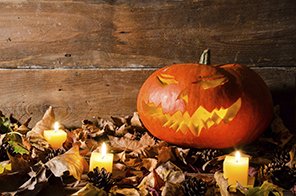 Use flashlights and flood lamps instead of candles and jack-o-lanterns to light areas outside and inside your haunted house. As a safety precaution, make sure you have fully charged and ready-to-use fire extinguishers that can be readily accessed.
Use flashlights and flood lamps instead of candles and jack-o-lanterns to light areas outside and inside your haunted house. As a safety precaution, make sure you have fully charged and ready-to-use fire extinguishers that can be readily accessed.
Of course, with a haunted house, there are many other unique considerations.
Here are some risks and solutions:
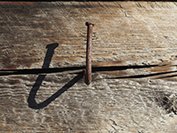 Nails and screws
Nails and screws
Inspect walls with a flashlight to check for and address any protruding nails or screws that may have been used while constructing the haunted house and putting up decorations.
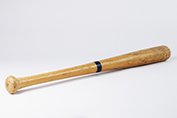 Deadly weapons
Deadly weapons
Never allow your actors to use weapons as props, including bats, sticks or chains. Weapons are scary – but not worth the injury risk.
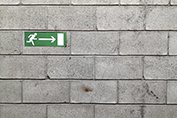 Access
Access
If you are operating a maze within the house – or even a corn maze in your yard – make sure you set up easy access points that allow people to get in and out quickly in case of an emergency. You should actually clearly mark emergency exits.
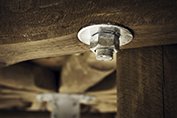 Maze supports
Maze supports
Check any walls that are set up to make sure they are well-supported. Do this after every night of the haunted house.
 Communication
Communication
Use radios to make sure all of your actors and other workers can communicate with each other during the course of the night.
Insurance for Your Haunted House
So, what happens if you think you have taken every safety precaution possible, and an injury still occurs? You need to be prepared for liability.
Regardless of whether you are allowing guests to enjoy your house for free, in exchange for donations or actually charging an admission price, we suggest that you contact your insurance agency and ask about coverage available to you.
Examples include:
Umbrella policy
You can basically consider adding on extra liability coverage to your existing homeowner’s policy.
Special events coverage
Many insurance companies also offer special coverage options. These policies may be called “haunted house coverage” or “pumpkin patch coverage.” Whether coverage will be available to you – and the cost – may depend on many factors, including:
- Duration
Policies typically won’t cover an event past 90 days. - Stunts
If the haunted house, pumpkin patch or zombie run features pyrotechnics, strobe lights, open flames, actors jumping out at visitors and stairways, it may be impossible to get coverage. You may need to re-think your haunted house design. - Expected crowds
A haunted house that anticipates about 50 visitors per night won’t cost as much to insure as one that expects several hundred. - Organization
A church, youth group or community organization may be able to get a discount insurance rate for the event. - Past incidents
If you have a history of injuries at your haunted house, you may need to pay a high price for insurance – if you can get coverage at all.
Another consideration involves who is working at your haunted house or Halloween-themed event. If you are paying people to serve as actors, security guards, ticket-takers, etc … they become your employees. If they are hurt by a frightened guest or a hazard on the property, you could be liable for their injuries. You may need to insure yourself against this risk as well.
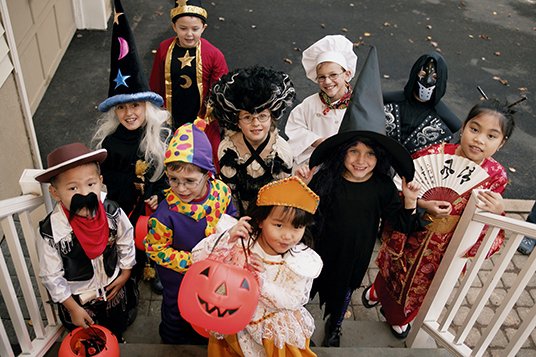
If you plan ahead, reduce injury risks and protect yourself in case liability arises, operating your haunted house should not be scary at all.

